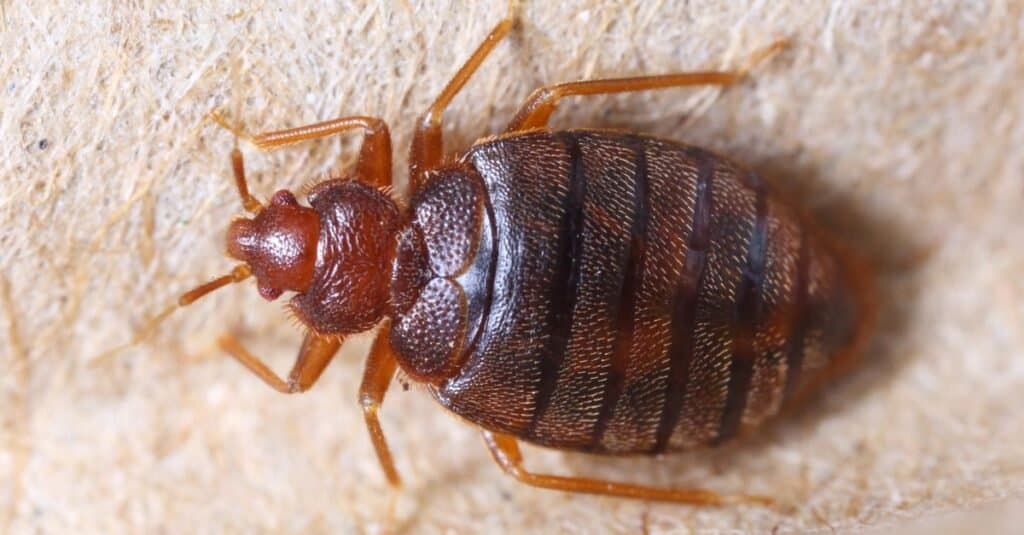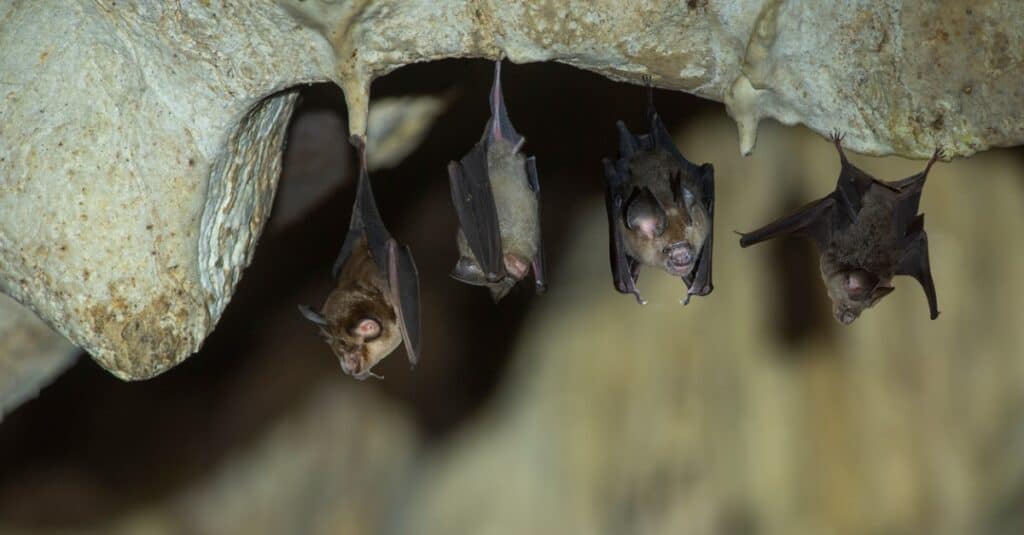Other than to drive you absolutely bananas, what is a bed bug’s environmental purpose? To begin with, it’s a common misconception that there is a direct correlation between bed bugs and a filthy environment. There isn’t. Bed bugs are just as happy to move in beneath Egyptian cotton sateen as they are cotton dipped in motor oil.
Its commonly understood that bed bugs have no reason to exist. There are no predators that consume them. They do not pollinate and they offer no distinguishing benefit to their surrounding environment. They simply do two things—eat and make more bed bugs.
So, a bed bug’s environmental purpose is nothing, at least insofar as all of the knowledge we have of them and their interactions with life and their surroundings. While that may sound cruel, it’s not a question of eradication, simply one of non-purpose. However, if you look for anything hard enough, you often find something you didn’t expect.
A Bed Bug’s Environmental Purpose

Cimex hemipterus on corrugated recycled paper. This is the type of bed bug that is found in tropical areas.
©7th Son Studio/Shutterstock.com
When asked if he could have a magic wand, would he wave it and make all bed bugs disappear, Mickey Eubanks, a Texas A&M insect ecologist said, “I’d wave it twice, just to be sure.” As far as spiders and other predatory arachnids or insects are concerned, going after bedbugs is a waste of time.
That’s not to say that bedbugs don’t end up as meals for spiders but it is to say that the spiders could do without. Life on this planet is a series of cycles, most of which are easy enough to decipher by simply observing our natural environment. The problem with bed bugs is, there is no observable cycle in relation to their environment.
However, like most other species on earth, a bed bug’s environmental purpose is a cycle of self-interested survivability.
Bed Bug Survival
Bed bugs want what almost every living creature on earth wants—food, shelter, and a source of water. If you can provide those things, bed bugs will move right on in and happily unpack their suitcases. So, from the point of view of having a purpose, a bed bug’s purpose is to survive.
It’s the things that bed bugs do to survive that drive us crazy, such as infesting beds, the cracks, and crevices in bed frames, couch cushions, and basically any upholstery that isn’t leather or some variation of it.
Bed Bug Reproduction
Looking at a bed bug’s environmental purpose from the PoV of the bed bug, it loves to reproduce. In fact, bed bugs reproduce at an insane rate if they aren’t discovered and summarily destroyed. If a female bed bug gets a bite to eat at her favorite fast food restaurant (otherwise known as a part of your body), she can begin the reproductive process.
The female bed bug is capable of producing between 1 and 7 eggs per day for ten days, so long as she has access to blood a single time. That’s between 10 and 70 eggs in a little over a week. Since the female bed bug lives for up to a year, she can lay a ton of eggs. Also, that’s just one female.
Males also get pretty boisterous about mating after they have a blood meal. Unfortunately, the type of mating bed bugs engage in looks like the scene of a homicide. The male bed bug quite literally gashes the female open to insert the sperm. The female will then use this sperm to continually fertilize eggs as she creates them.
This means the female can go without a male for a long time, simply relying on the inseminated sperm to continually fertilize new batches of eggs as she produces them.
Bed Bugs Don’t Pollinate

Butterflies are effective pollinators.
©Media Marketing/Shutterstock.com
There’s not much to add to this other than the fact that bed bugs are not a part of the all-important act of pollination. Without pollination, it’s likely that the planet would not exist as it does today. In fact, many scientists believe that life on Earth would come to an end, with the food chain broken.
Since bed bugs don’t contribute to crop pollination, of which 75% of the entire planet’s supply requires pollination, they’re irrelevant to the potential apocalypse.
Bed Bugs as a Part of the Food Chain
Here is where most of the argument over the necessity of bed bugs takes place. As for a bed bug’s environmental purpose, some believe that they are an important part of the food chain, where spiders are concerned. Others believe that spiders wouldn’t suffer a bit if all the bed bugs in the world vanished overnight.
It would be like taking corn dogs out of the freezer, with all of your other frozen foods remaining. The corn dogs aren’t exactly good for you anyway. The argument against a bed bug’s part in the food chain is a simple one—they only propagate in a relatively obscure and secluded environment (aka your bed).
Bed Bugs as Predators
Bed bugs play no role in the control of other species because they don’t go after any other species. They only prefer to feast on human beings (at least for the most part). Unless they happen to transfer some wild disease, they may aggravate humans but certainly don’t kill them.
Where Do Bed Bugs Come From?

Baby bats roosting.
©iStock.com/BirdHunter591
The running theory is that bed bugs are descendants of bat bugs, the latter of which decided (way back when human beings were finger painting in caves) that human beings were far more tasty than bats. At some point, these bed bug ancestors made the decision to stick with humans exclusively and the rest is history.
One thing that bed bugs haven’t done over the passage of thousands and thousands of years is change much. Why bother? Humans are yummy and readily available. Unfortunately, that also means that bed bugs haven’t become an important and inseparable part of the food chain either.
All they do is eat, breed, and come back for seconds.
Bed Bugs Spread Diseases
One argument that can be made in favor of the existence of a bed bug’s environmental purpose is the spreading of disease. That sounds weird, however, we’re applying ‘purpose’ to bed bugs and (outside of possible meals for spiders) there simply isn’t much to go on.
Once upon a time, it was assumed that bed bugs didn’t really pass on any diseases, at least not anything truly debilitating. A study conducted by the American Journal of Tropical Medicine and Hygiene changed all of that.
The study found that Trypanosoma cruzi, a type of parasite capable of spreading Chaga’s disease, can spread to human beings via bed bug infestations and bites. Basically, the bed bug delivers the vehicle and the vehicle delivers the payload. Chaga’s disease is deadly, killing upwards of 50k people each year.
Though it sounds ghastly, you might say that a bed bug’s environmental purpose is assistance in population control.
Final Thoughts on a Bed Bug’s Environmental Purpose
There’s very little in the way of scientific evidence that the existence of bed bugs serves a necessary purpose. If they all vanished overnight, we and the animals we share this planet with would go on living just as we always have. In fact, many of us would go on living in a more comfortable state, especially at bedtime.
While that kind of determination won’t blow anyone’s socks off, it’s nice to know that bed bugs aren’t exactly a crucial necessity. Sure, spiders eat them. But, that’s the equivalent of having a lone snack in the refrigerator that no one else likes. It’s all that’s left so you might as well dig in.
The photo featured at the top of this post is © Jay Ondreicka/Shutterstock.com
Thank you for reading! Have some feedback for us? Contact the AZ Animals editorial team.






